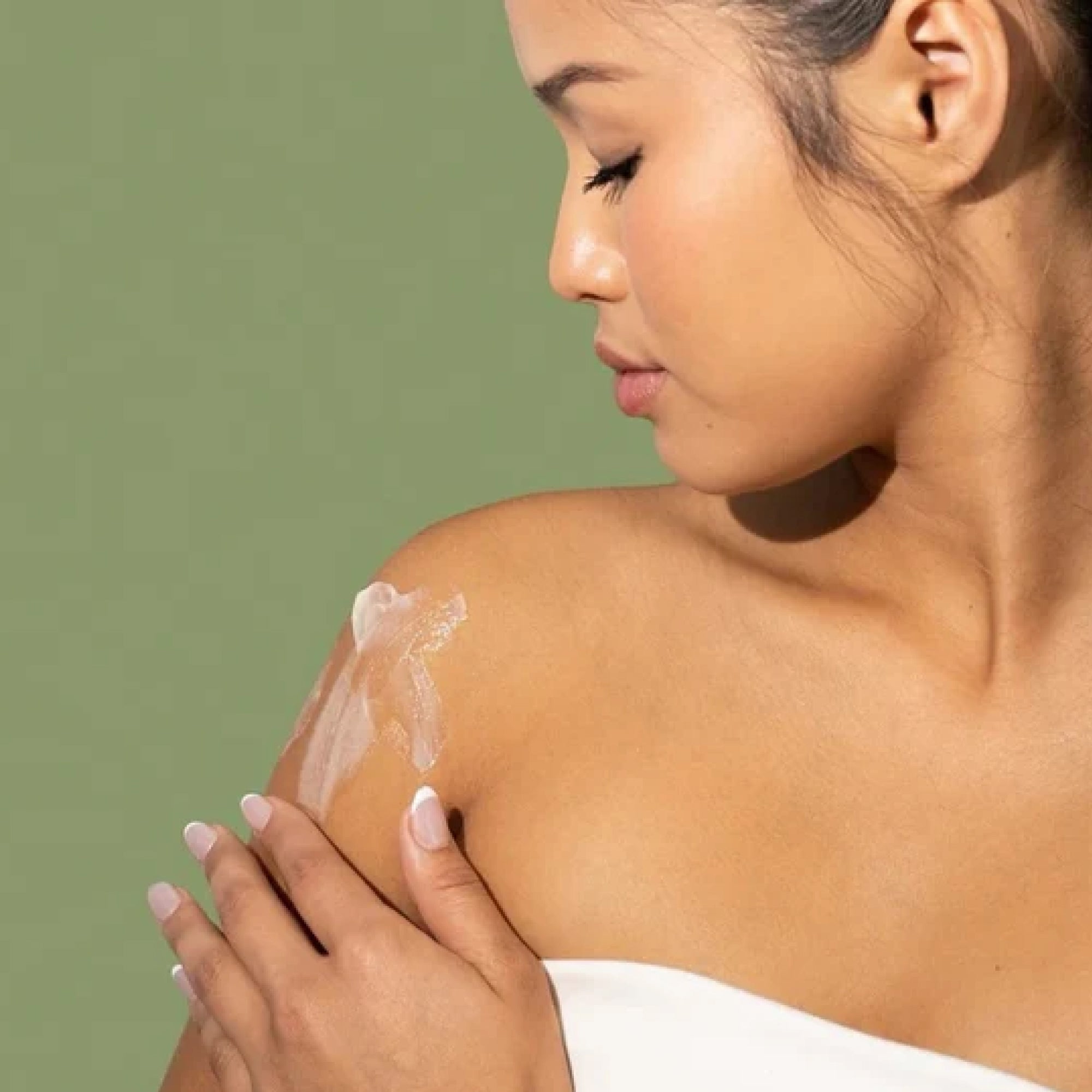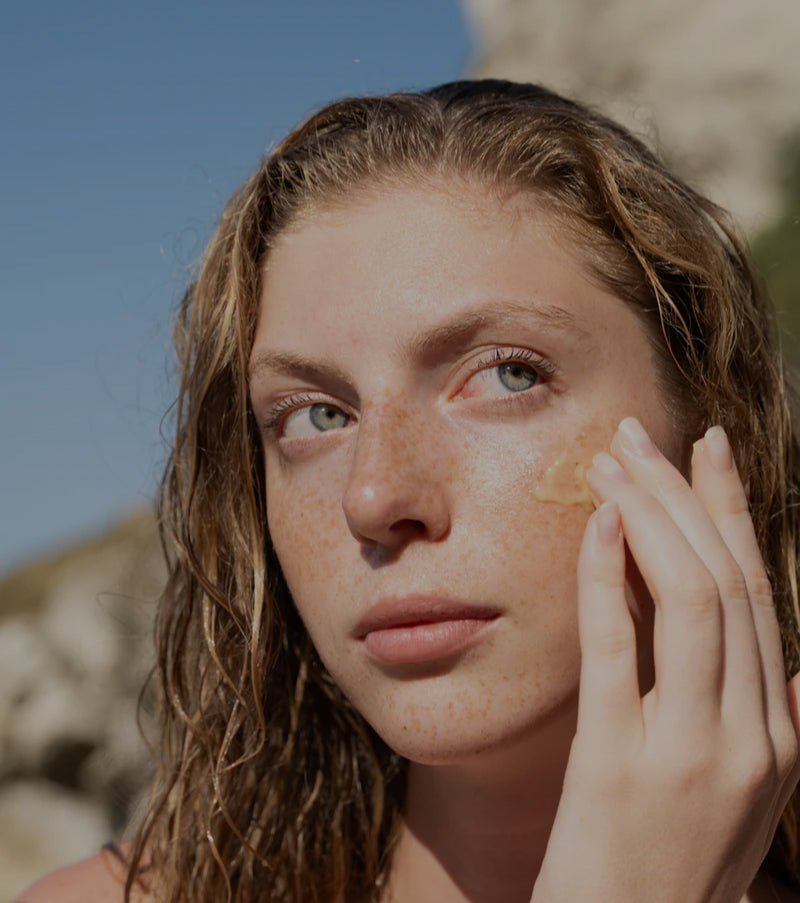Your skin barrier, scientifically known as the stratum corneum, is your body's first line of defense against the outside world. This remarkable structure, only about 10-20 micrometers thick (thinner than a sheet of paper), consists of dead skin cells (corneocytes) held together by a matrix of lipids, functioning like bricks and mortar in a wall. When this barrier is strong and intact, your skin appears calm, hydrated, plump, and resilient.
When it's compromised, you may experience a cascade of issues including persistent dryness, redness, tightness, increased sensitivity, and even accelerated aging. This comprehensive guide explains how to strengthen your skin barrier naturally using simple, science-backed strategies that work with your skin's biology rather than against it.
Signs of a Weakened Skin Barrier
- Persistent dryness, flaking, or tightness
- Redness, stinging, or burning after applying products
- Increased breakouts or rough texture
- Heightened sensitivity to weather changes
If these sound familiar, focus on gentle care and hydrating, barrier-supportive ingredients.
Core Strategies to Strengthen Your Skin Barrier
1) Simplify Your Routine
Use fewer, smarter products. Over-exfoliation and layering too many actives can strip lipids and disrupt pH. Start with a gentle cleanser, a hydrating serum, a nourishing moisturizer, and broad-spectrum SPF during the day.
The modern skincare industry often promotes complex, multi-step routines, but when it comes to barrier repair, less is definitively more. Over-exfoliation and layering too many actives can strip essential lipids, disrupt your skin's pH, and overwhelm its natural repair mechanisms. Research shows that using more than 3-4 leave-on products can actually increase the risk of contact dermatitis and barrier disruption.
2) Choose a Gentle, Low-pH Cleanser
A mild, sulfate-free cleanser preserves skin’s natural oils and microbiome. Avoid hot water and harsh scrubs; cleanse with lukewarm water for 30–60 seconds.
3) Rebuild Lipids With Ceramides, Cholesterol, and Fatty Acids
Ceramides, cholesterol, and fatty acids are the building blocks of a healthy barrier. Look for moisturizers that include all three to support barrier repair and reduce transepidermal water loss (TEWL).
Cleansing is perhaps the most critical step in barrier care, as harsh cleansing is the number one cause of barrier disruption. Choose a mild, sulfate-free cleanser that doesn't leave your skin feeling "squeaky clean" – that sensation actually indicates lipid stripping.
4) Hydrate Deeply With Humectants
Humectants are water-attracting molecules that draw moisture from the environment and deeper skin layers to the surface. However, using them incorrectly (without proper occlusion) in dry climates can actually increase water loss. The key is strategic layering.
Humectants like glycerin, hyaluronic acid, and panthenol attract and hold water in the skin. Layer a hydrating serum under moisturizer to lock in moisture.
5) Seal With Occlusives
Occlusives create a physical barrier on the skin's surface, dramatically reducing TEWL. While petroleum jelly reduces TEWL by 98%, many people find it too heavy or comedogenic. Modern alternatives provide significant occlusion with better cosmetic elegance.
6) Protect With Daily SPF
UV radiation is one of the primary causes of barrier dysfunction, triggering inflammation, depleting antioxidants, and damaging the lipid matrix. Daily SPF isn't just about preventing aging and cancer – it's essential for barrier health.
UV exposure weakens the barrier and triggers inflammation. Use broad-spectrum SPF 30+ every morning, even on cloudy days. Physical filters (zinc oxide, titanium dioxide) are often well-tolerated by sensitive skin.
Best Natural Ingredients for Barrier Repair
- Colloidal oatmeal: Soothes itching and reduces redness while reinforcing barrier lipids.
- Aloe vera: Calms irritation and hydrates without heaviness.
- Squalane (plant-derived): Mimics skin’s natural sebum; non-greasy and supportive for barrier function.
- Niacinamide (vitamin B3): Boosts ceramide synthesis, reduces redness, and enhances resilience.
- Panthenol (pro-vitamin B5): Hydrates and supports repair.
- Honey: Natural humectant with mild antimicrobial properties.
- Green tea extract: Antioxidant that reduces environmental stress.
For a curated list of calming options, see our guide to skin routines featuring soothing, natural ingredients.
Daily Routine Tips for Long-Term Results
Morning
- Cleanser: Gentle, low-pH
- Hydrator: Glycerin or hyaluronic acid serum
- Barrier serum: 2–5% niacinamide, if tolerated
- Moisturizer: Ceramides + cholesterol + fatty acids
- Sunscreen: Broad-spectrum SPF 30+
Evening
- Remove sunscreen/makeup: Use a gentle oil or balm if needed
- Cleanser: Mild, no scrubbing
- Treatment: Panthenol or a peptide serum; avoid strong acids/retinoids until sensitivity improves
- Moisturizer: Barrier cream
- Optional occlusive: Light layer of squalane or shea butter on dry areas
Weekly Adjustments
- Exfoliation: Limit to 1–2 times per week with a mild lactic acid or PHA, only if skin is calm
- Humidity helpers: Use a humidifier in dry seasons and keep shower temps moderate
- Lifestyle: Hydrate, prioritize sleep, and include omega-3-rich foods (salmon, flax, walnuts) to support lipid balance
Natural Oils: How to Choose Wisely
- For dry skin: Squalane, jojoba, marula, meadowfoam
- For sensitive or reactive skin: Squalane and jojoba are least likely to clog pores
- Patch test every new oil for 48–72 hours on the inner forearm or behind the ear
Avoid These Barrier Breakers
- Overuse of strong acids (high % AHAs/BHAs) and harsh scrubs
- Fragrant essential oils in high concentrations
- Alcohol-heavy toners that leave skin tight
- Frequent product switching without patch testing
When to Seek Professional Guidance
If your skin remains inflamed, itchy, or flaky despite gentle care, consult a dermatologist to rule out eczema, contact dermatitis, or other conditions. Those tapering off prescription steroids may experience heightened sensitivity; learn more about topical steroid withdrawal here.
Conclusion
A strong skin barrier comes from consistency, not complexity. Cleanse gently, hydrate smartly, rebuild lipids, and protect with daily sunscreen. Choose soothing, barrier-friendly ingredients and avoid over-exfoliation. With a simplified routine and steady habits, you can naturally restore resilience, reduce sensitivity, and maintain calm, healthy skin for the long term.
Read more

Sensitive skin needs consistency, minimal irritation, and barrier-supporting products. The ideal routine aims to cleanse without stripping, hydrate deeply, protect from UV and pollution, and quietl...

When winter arrives, parents often notice their baby’s skin becoming drier, redder, and more irritated. This is not your imagination cold weather and low humidity deplete the skin’s natural moistur...
